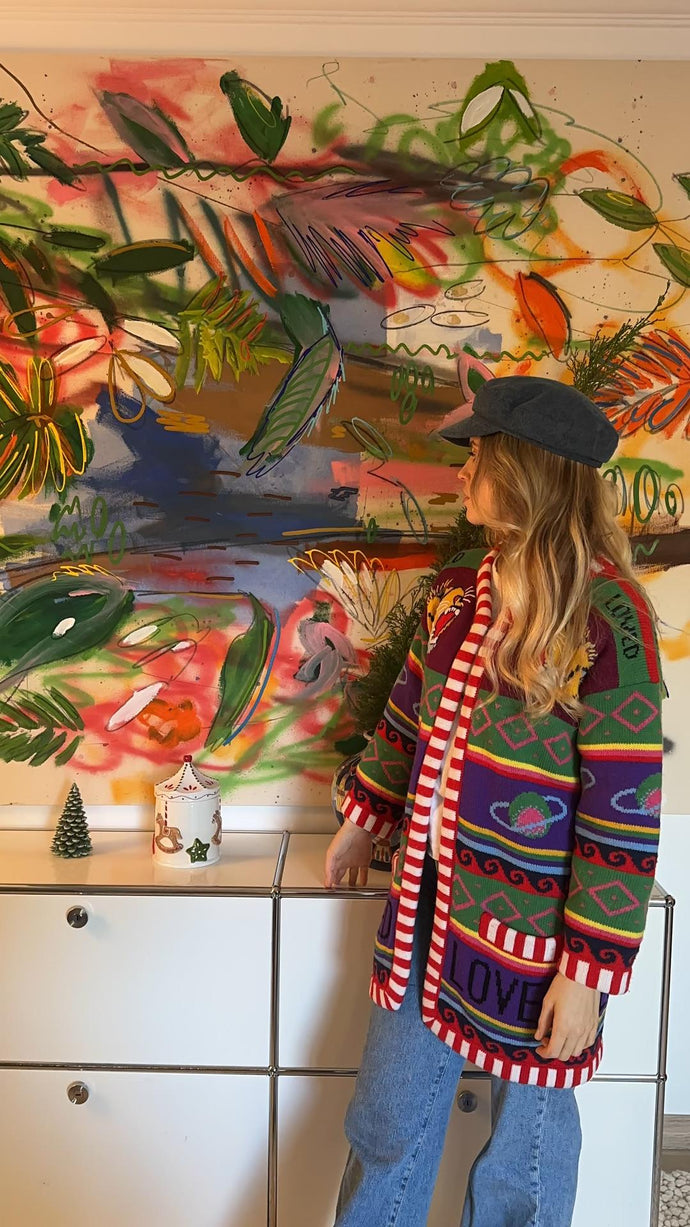By Arron Westbrook
2018 Christie’s sold its first work created by artificial intelligence. But is it really art?
Last October, the art world received a bit of a shock. Christie’s, the famous New York auction house, where some of the greatest works of all time have been bought and sold, listed a work created not by a human, but by machine. The question is, and was — is it really art?
Portrait of Edmond de Bellamy (2018), an uncanny old-master esque depiction of an aristocrat was created by an algorithm. The work was the product of French art collective Obvious, and has opened up a deep debate in the public imagination. After all, if machines can make art, the mystique of creative genius surely has to drift away?
What happens when the work created by machines becomes technically, thematically and conceptually more interesting than that made by human hand?
The history of computer generated art
Creating art with computers is, in fact, nothing new. Way back in 1965, we saw the first exhibition of art created in this way. Georg Nees’ computer-generated art, exhibited in Stuttgart, was the first touchstone for much of the debate we’re having today. Created using a plotter that followed a programmed pattern to create geometric shapes, the question then is as it is today with the Obvious creation, is it actually art? Likewise, artists such as Vera Mulnar and William Latham have applied similar principles in their artistic creation.
Creativity is something we value as being intrinsically human. Prehistoric cave paintings are seen as the first sign of human intelligence. And in some ways, even some of the art “created” by computers are in most senses a product of human intelligence. After all, it is a human who created the algorithm in the first place. In the case of the Obvious work, the AI augments human creativity, rather than replaces it.
Is art created using computers really the product of artificial “intelligence”?
A human chooses the data set. A human designs the network. A human trains the network. A human curates what comes out of the other side. AI might do the actual production, but even art “created” by AI is very much a product of a human brain.
So why the fuss of over Portrait of Edmond de Bellamy? It all seems to look like a bit of a PR stunt. Either that, or the media have jumped in on the debate to further undermine art itself.
Throughout history, new and innovative ways of creating art have been dismissed by the mainstream media. Even respected art journalists have been known to question everything from minimalism to found art, naive to performance art. We know that the shock of the new makes people angry. We’re witnessing the same with art created by AI.
But perhaps AI is something worth worrying about? Not with the art being created now, but perhaps with the art created in the future.
At the point where a self-learning algorithm that has been trained to create works that resemble paintings akin to old masters steps further to create weird, wonderful and original pieces that we’d not only see in a gallery space, but as with the Obvious collective’s work, actually buy from an auction house to add to our collection, we surely have to take these art objects seriously? No matter how much we instinctively want to rebuke them. Art has always been at the forefront of invention. Why should it be any different now?
Ultimately, we are at a bit of a crossroads. Across all parts of our society, we are now dealing with the possibility that AI could well become smarter than we are. This isn’t just a computer beating world-class players in chess and the game Go. This isn’t about an AI artwork selling at an auction house in New York. This is a bigger, more complex issue.
Accepting AI into the art world will depend on our understanding of the changing aesthetics that will inevitably come with works created by intelligence greater than our own. The spectacle is likely to open up our understandings of self.
One thing is for certain, the future of art is going to be exceptionally interesting. And whether the media, artists or collectors like the idea of creativity being tainted by technology, it is going to happen. We’ve already accepted Alexa into our homes. Embracing artwork created by Alexa’s arty sister isn’t as much of a leap of faith when you think of it in those terms.


